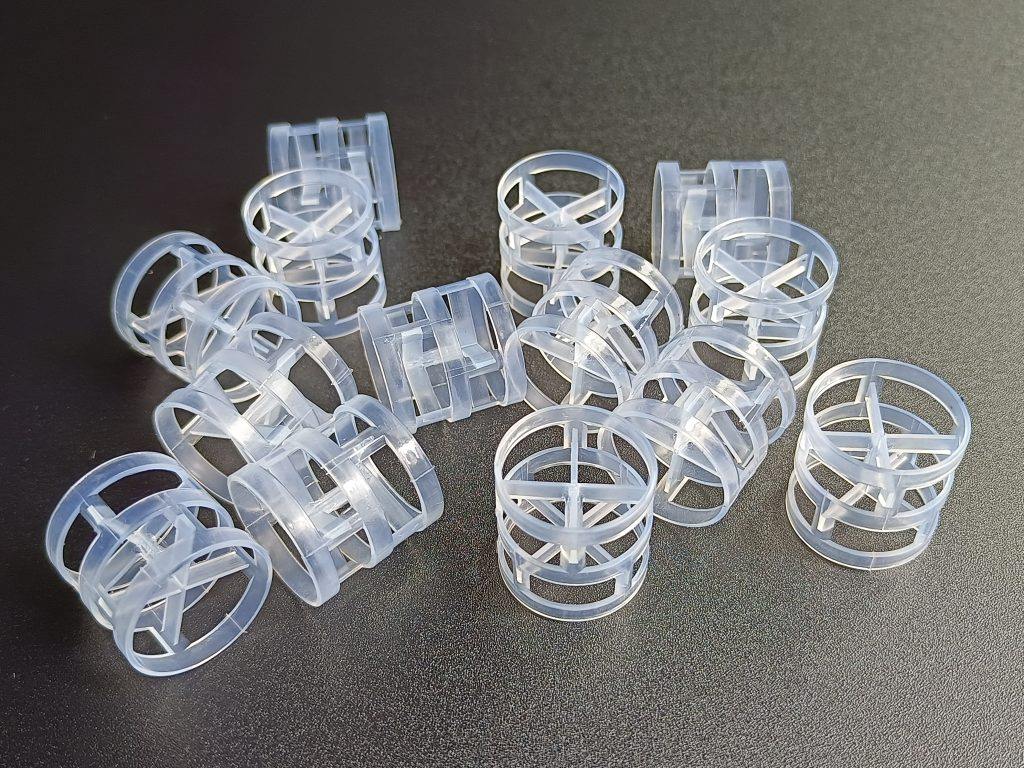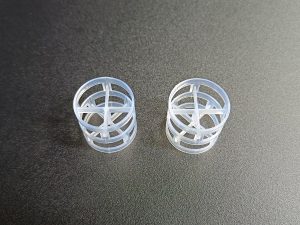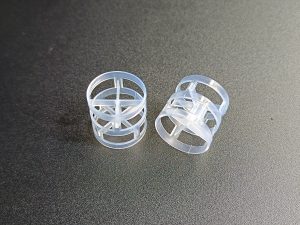
There are several industrial applications that make extensive use of PFA (Perfluoroalkoxy) pall rings because of the particular qualities that they possess, which have resulted in considerable advantages. A few examples of popular usage for PFA pall rings are as follows:

1. Chemical processing: PFA pall rings are often used in chemical processing towers and columns: this is a popular use for these rings. When it comes to separation techniques that include corrosive chemicals, they are used for distillation, absorption, stripping, and other similar procedures. Because of its resilience to chemicals and its lack of reactivity, polyfluoroalkane (PFA) is an excellent choice for the management of aggressive or corrosive compounds while also ensuring a high level of separation efficiency.
2. fabrication of semiconductors: PFA pall rings are used in the fabrication of semiconductors, namely in the operations of wafer cleaning, etching, and chemical vapor deposition (CVD). The attainment of high purity levels and the prevention of contamination of sensitive semiconductor materials are both facilitated by their presence.
3. Production of pharmaceuticals: PFA pall rings are used in the manufacturing operations of pharmaceuticals, which need a high level of purity and exact separation respectively. Additionally, they are used in the distillation, extraction, and purification processes, which contribute to the production of medicinal goods of superior quality.
4. PFA pall rings are used in the manufacturing of electronic components, including printed circuit boards (PCBs), integrated circuits (ICs), and electronic connections. Other applications include the electronic and microelectronics sectors. As a result of their assistance in the purification and separation procedures that are involved in the manufacture of these components, they contribute to the development of electronic devices that are of a satisfactory quality and reliability.
5. PFA pall rings are employed in environmental applications, primarily in air pollution control systems and wastewater treatment procedures. This is the fifth and last application of PFA pall rings. By promoting effective mass transfer and interaction between the gas and liquid phases, they contribute to the removal of pollutants from industrial exhaust gasses or wastewater streams. This is accomplished by removing contaminants from the streams.
6. Production of specialized chemicals: PFA pall rings are used in the manufacturing of specialty chemicals, which need the separation and purification of the components in an accurate manner. Through the provision of effective mass transfer and the reduction of the possibility of material contact or contamination, they contribute to the achievement of very high product quality and purity.
7. Gas scrubbing: PFA pall rings are used in gas scrubbing systems in order to eliminate pollutants or contaminants that are present in gas streams. They contribute to the maintenance of a high gas quality and safeguard equipment farther downstream from being damaged or corroded.


| Size
mm |
Surface area ㎡/m³ | Void fraction
% |
Bulk number
Pcs/m3 |
| Φ16 | 188 | 91 | 179000 |
| Φ25 | 175 | 90 | 53500 |
| Φ38 | 115 | 89 | 15800 |
| Φ50 | 93 | 90 | 6500 |
| Φ76 | 73.2 | 92 | 1980 |
| Φ100 | 52.8 | 94 | 1000 |
The applications listed above are only a few examples of the many applications that often make use of PFA pall rings. There are a number of criteria that influence the precise choice of packing material, including PFA pall rings. These considerations include the needs of the process, the chemical compatibility of the material, the operating circumstances, and the type of the chemicals that are being processed. It is vital to consult with process engineers and other skilled professionals in order to select the packaging material and design that is most appropriate for a particular application.
It is possible for the size of PFA (Perfluoroalkoxy) pall rings to change according on the particular application and the procedures that are required for the process. The height (H), outer diameter (OD), and inner diameter (ID) of the pall rings are the usual measurements that are used to determine the size of the rings. When it comes to PFA pall rings, the following are some basic size ranges:

1. PFA pall rings are available in a variety of outer diameter diameters, often ranging from a few millimeters to many centimeters. This is referred to as the outer diameter (OD). When it comes to PFA pall rings, the most common OD diameters might vary anywhere from 5 mm to 50 mm or even more.
2. Inner diameter (ID): The inner diameter of PFA pall rings is often smaller than the outer diameter, and it typically varies in accordance with the outer diameter. Depending on the needs of the particular application, the internal diameter (ID) of PFA pall rings may vary anywhere from a few millimeters to several centimeters.
Height (H): The height of PFA pall rings is the distance between the top and bottom of the ring. This value is referred to as the height factor. The height might change depending on the packing density that is needed as well as the particular needs of the process. There is a wide variety of possible heights for PFA pall rings, from a few millimeters and several centimeters respectively.
Considerations such as the particular process circumstances, the intended mass transfer efficiency, pressure drop constraints, and the size of the column or tower where the packing will be placed are some of the aspects that should be taken into consideration when selecting the proper size of PFA pall rings. It is crucial to note that these considerations are all significant. For the purpose of determining the ideal size of PFA pall rings for a given process, it is advised to consult with process engineers or other professionals who are experienced with the particular application.
The applications listed above are only a few examples of the many applications that often make use of PFA pall rings. There are a number of criteria that influence the precise choice of packing material, including PFA pall rings. These considerations include the needs of the process, the chemical compatibility of the material, the operating circumstances, and the type of the chemicals that are being processed. It is vital to consult with process engineers and other skilled professionals in order to select the packaging material and design that is most appropriate for a particular application.